Waterproof cycling clothing - everything you need to know

Waterproof cycling clothing is essential for northern hemisphere riding conditions as dry conditions are never a certainty. The best waterproof jackets are versatile garments that can act as more than just a shelter from the rain, because the higher the water resistance, the better it also blocks out the wind. This means those light, packable waterproof layers can also double up as a windbreaker and provide warmth - especially on mountain descents.
- Best waterproof mountain bike jackets
- Best mountain bike waterproof shorts - how to buy the best ones
- Endura Women’s MT500 Waterproof Jacket II
What is waterproof cycling clothing?
Waterproof cycling clothing is usually constructed of three layers; an outer layer, a mid-layer (or membrane) and an inner layer. These are then laminated together to create what looks like one fabric.
The most precious part of the waterproof garment is the membrane, and the two sandwiching layers are acting to protect it. The outer layer is the one protecting the garment from elements and can feature a Durable Water Repellent (DWR), or similar, coating that sheds water away. DWR coating is a thin layer of liquid applied to the outside of technical garments to repel liquids. Historically, DWR coating has had serious environmental consequences - which have been addressed with new, more sustainable coatings.
The microporous membrane is, in essence, full of microscopic pores that are many times smaller than a water droplet. These pores can get clogged by sweat or damaged by abrasion, so the outer and inner layers are there for protecting the membrane and aiding ventilation.
In addition to the fabric, you also have waterproof zips (rare) and in highly waterproof kit, the seams of the garments are taped to block the holes from the sewing machine needle.
Waterproofs are not garments that you should never wash. Quite the contrary actually. You need to clean and reproof them periodically – otherwise, the pores get clogged with sweat and dirt and, over time, the DWR layer will wash and rub off, which means your garment won’t perform as intended. Scroll down to read more about caring for your waterproofs.
With modern waterproof garments, waterproofness never means just protection from the outside elements, but breathability comes as part of the package. If you wear a very (or totally) waterproof, non-breathable garment, you will eventually saturate it from the inside, meaning you need some level of breathability built into it as well - otherwise you might as well opt for a plastic bag. And this is the last thing you want because water conducts heat away from the body a lot faster than air. So if you’re wet, you get cold.
Luckily, most waterproof kit is tested extensively in labs and real-world conditions, resulting in all sorts of numbers that can help you find the most suitable waterproof-yet-breathable piece of clothing. So let’s dive into some information that can help you choose your next waterproof riding kit.
Waterproof rating and testing explained
When it comes to waterproofness, it’s all about numbers - and the bigger, the better in this case. Clothing waterproofness is measured in millimetres and usually ranges from about 5,000 to 30,000 - these numbers measure millimetres.
In order to achieve the figures laid out below, the waterproof garments need to go through various different testing procedures.
The basic one measuring waterproofness is a hydrostatic head test, in which water is pumped against a clamped fabric specimen at gradually increasing pressure until droplets are seen coming through. When the droplets are seen the pressure is recorded in cm (or mm) head of water or in kPa depending on the method.
For example, a jacket that has a waterproof rating of 5,000 will only be good for a little drizzle - it will quickly be saturated and heavy, and doesn’t have much to prevent the water from penetrating the top layer. However, it is likely very breathable.
Going to the other extreme - the Gore-Tex Shakedry jacket, for example, boasts a minimum of 28,000mm waterproofness, classifying it as “extremely waterproof”. The below graph will detail the basic ratings and their ideal conditions.
|
Waterproof rating (mm) |
Water resistance provided |
Ideal conditions |
|
0-5,000 mm |
No resistance to some resistance to moisture. |
Light rain, dry snow, no pressure. |
|
6,000-10,000 mm |
Rainproof and waterproof under light pressure. |
Light rain, light pressure. |
|
11,000-15,000 mm |
Rainproof and waterproof except under high pressure. |
Moderate rain, and light pressure. |
|
16,000-20,000 mm |
Rainproof and waterproof under high pressure. |
Heavy rain, some pressure. |
|
20,000 mm+ |
Rainproof and waterproof under very high pressure. |
Heavy rain, high pressure. |
Breathability rating and testing explained
In order for a garment to be both waterproof and breathable, it needs to have pores that block the water from getting in but allow moisture to evaporate out.
Breathability is measuring the water vapour that can be let out through a fabric - this usually means sweat. High breathability-rated clothes won’t stop you from sweating, but they will make sure you stay warm and comfortable even when you are racing up a steep hill.
Just like with waterproofness testing, the breathability of fabrics is measured in multiple different ways and different brands each have their own in-house testing methods that complement the most common universal ones.
Breathability is often measured in a ‘g/m2/24hrs’ measurement. This is the result of a Moisture Vapour Transmission (MVT) test and represents the amount of water by weight that can pass through a square metre of fabric over the course of 24 hours. A higher rating means better breathability.
Other ways of measuring breathability are the Upright and Inverted Cup Test which have the same result format as (MVT). The Resistance of Evaporation of a Textile (RET), is used by Gore-Tex and these ratings will often be shown as a “less or more than” figure, ie. RET <9, and the smaller the figure, the better.
To give an overview of the MVT breathability ratings, have a look at the graph below.
|
Breathability Rating g/m2/24hrs |
What does it mean? |
|
Below 10,000 |
This is a rating for more casual wear, offer little in the way of functional breathability |
|
10,000 - 20,000 |
10-20k is standard for the industry and will do a decent job of getting rid of excess heat and moisture |
|
20,000 - 30,000 |
Sitting in the performance range, 20k-30k of breathability will stop you from getting damp and clammy unless you’re really pushing the pace and working up a sweat
|
|
Above 30,000 |
This is pretty much as breathable as things can get without sacrificing waterproofing. Whether you can detect any difference from a 20k-30k rating at this stage is questionable so if you can’t find 30k+ ratings, don’t sweat over it |
A look at brands: Gore-Tex and the Shakedry technology
Invented in 1969, Gore-Tex paved the way for a wide range of fabrics all based on sandwiching a PTFE (yes, don’t Google the health effects of this too much) membrane with microscopic holes in it between two layers of fabric. Nowadays, there are many different Gore-Tex fabrics, technologies and garments to choose from.
I interviewed Gore-Tex’s Marketing and PR specialist Catriona Sutherland about its products and technologies.
“Everything we really do is based around science and technology and testing. We don’t just create one Gore-Tex laminate fabric, but there is a whole portfolio of laminates that we use. They’re designed around the end use. Every given garment will go through not only lab testing (100 different tests) but also field testing that ensures for example how the product also feels against the skin,” Sutherland explains.
Even though Gore-Tex makes a whole range of technical outerwear, it is better known for the Shakedry jacket.
“What makes Shakedry unique is the lack of face fabric. What you see, the face fabric is the membrane, and on the inside, there is a backer fabric. By the nature of this, it doesn’t have a DWR coating and, as the name suggests, it shakes dry. And when talking about wash and care, Shakedry’s won’t need a reproof,” Sutherland explains.
With basically just one layer, Shakedry jackets are thinner and lighter than a regular, three-layer laminate. That means they are also more packable and extremely breathable.
The membrane on the outside repels water without needing a DWR coating, making it a very easy-to-maintain garment. So it’s permanently water-resistant, and as its name says – it shakes dry.
> Buy now: Gore Wear C5 Gore-Tex SHAKEDRY 1985 Insulated Viz Jacket from Wiggle for £329.99
When Shakedry was introduced, it was only available in Gore-Tex’s own line of clothing but you can now find it in other brands’ offerings as well - the likes of Castelli, 7Mesh and Rapha - but the og Shakedry manufacturing is still dominated by Gore-Tex.
Shakedry’s selling points are its lightweight, breathability and wet-weather performance.
Choosing the right waterproof cycling clothing
It still might be daunting to try to find the right jacket or pair of trousers as there are literally hundreds of brands and options available. Once you understand most of the technology behind waterproof clothing it’s easier to start your search.
Talking to another leader in the cycling garments industry, Scottish brand Endura, it gave this recommendation: “[what to choose] fully depends on the intended use, as well as the budget. If you ride in Scotland and use uplifts, the waterproof properties of a garment might be the main focus. If you ride in Italy and pedal uphill yourself, lightweight packability and high breathability might be your main focus.
> Buy now: Endura GV500 Waterproof Jacket from Chainreactioncycles for £111.00
It makes sense to look for garments that have been constructed for the activity that you intend to use them for. Focus on higher breathability is a key difference in all our jackets across the price points to outdoor sports products as cycling is generally a high-intensity sport, for at least some of the time!”
From talking to the brands, those budgets and intended use came up frequently, in addition to packability. So first, think of your riding and the intended use of the garment. Do you only ride short distances and do you live in an area where it doesn’t rain that often?
Gore-Tex's Sutherland highlighted a scenario: “If you are only going for a 10-mile cycle and there is a chance of light rain, you might not need a fully waterproof jacket in that case. You can choose to have a product that has a really high-breathability rating, such as the Gore-Tex Infinium, but know that it also has water resistance to it.”
Second, think of your budget. Something like a Gore-Tex Shakedry can cost hundreds of pounds, but it can also last you a lifetime. But it is not necessarily a product you need if you don’t go out cycling in rainy conditions anyway, in which case you can choose something less advanced, and less expensive.
For off-road riding you also want something robust - so perhaps steer away from the thinnest materials even though they are repairable, as well.
And lastly, check the rating numbers and also, whether the seams are taped or not.
Waterproof cycling clothes care and re-proofing
Because of the porous nature of waterproof garments, they need a little more care than your regular cycling jersey. If your waterproofs feel wet and heavy, or in any way like they are not performing as intended, it’s time to reproof and wash them.
“The beauty of wash and care is that it extends the life of the products. It means you get it working at its best and it’s really simple to do, “ Sutherland summarises.
The first thing to do is to check your garment’s label - it will likely have care instructions on it.
Sutherland recommends the wash to be a standard 30- or 40-degree cycle with liquid detergent (powder might leave residue) and make sure to rinse the product very well - even twice. Then it’s time to air-dry.
Continuous washing will strip away the waterproof coating from the clothing over time, which means it needs to be re-applied (even if you don’t wash your waterproofs, the proofing wears off). You can either wash the waterproof garment with a product that applies the proofing as well or simply apply it after the wash and dry. There are lots of different re-proofing products available and they will also have instructions on how to use them.
To reactivate the DWR coating, you need heat. If you have a tumble dryer, Sutherland recommends a 20-minute cycle in there - if you don’t, then iron the garment with for example a tea towel in between will work, too.
Waterproof cycling clothing sustainability
Finally, waterproof garments especially have gone through a push for more sustainable practices, technologies and materials. Many companies are now using fluorine-free DWR coatings that are less harmful to the environment and doing their best at offering the customers the best advice on how to care for the products to ensure long life.
Brands like Gore-Tex and Endura also offer repair services and very long guarantees, so worth getting your jacket repaired, rather than tossed away.
Because as you have hopefully learned from the article above, waterproof clothing doesn’t always come cheap - and it’s not only good for your wallet to keep them good for long, but it also helps the environment.
“From an environmental standpoint as well, the longer you have the product the better,” Sutherland concludes.









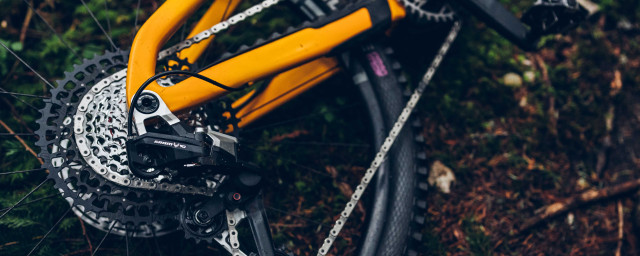

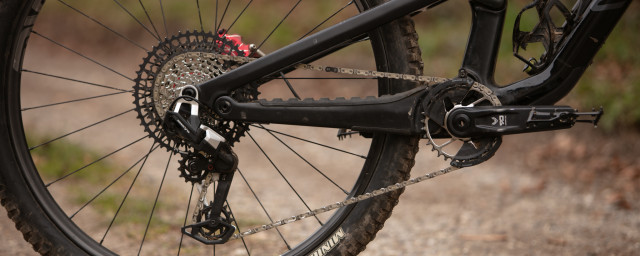
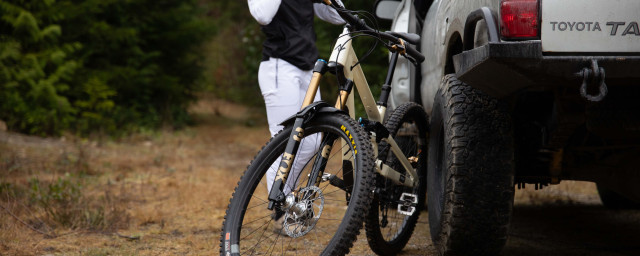
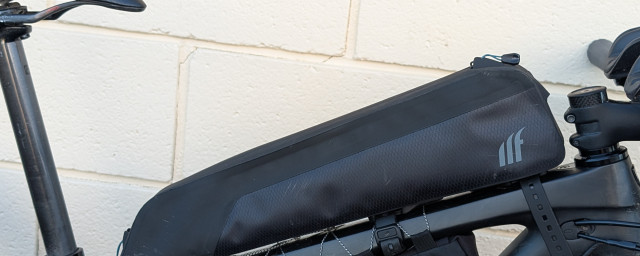
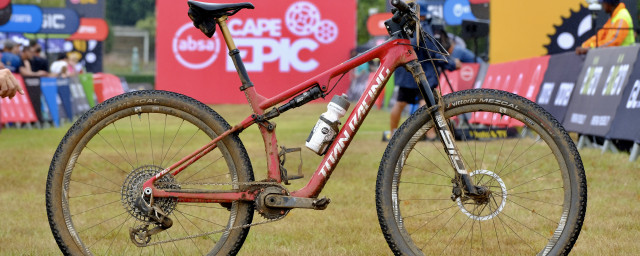


2 comments
I think the only thing I would mention here is that to suggest higher hydrostatic head ratings are more suitable for heavier rain is a common but incorrect misconception. 10k will keep you just as dry as 20k or higher in heavy rain because rain doesn't in itself exert much pressure, even if its windy. A lot of tents are only 5k. The differences in pressure come from, mainly, whether or not you are using a backpack and how heavy it is. Most people would still be fine with 10k but photographers, campers etc who carry more might want something a little higher to stop water seeping in through the shoulders.
For cyclists, 10k should be fine as most either don't carry a backpack at all, or don't have much in it.
NEVER USE DETERGENT!!!!!!! It will strip the DWR coating off your wateproofs.
Use mild soap like Lux flakes or Nikwax Loft instead and run the machine on a empty cycle to wash out any detergent residue first.
When your waterproofs stop beading water then give them a wash. If water isn't beading then the DWR surface is dirty and you will also start to get condensation on the inside as the breathability is compromised. And remember if it is raining then the breathability of even the best Gore-Tex jacket is next to zero as all breathable systems rely on a humidity gradient between inside and outside to move the moisture across the membrane. And NEVER EVER wear cotton under a waterproof/breathable jacket.
Gore Engineered For Extreme Weather trained sales assistant in my youth.